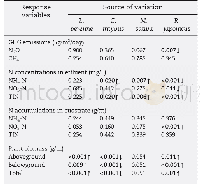《Table 8Main particulars of the vessels considered for pressure calculations》
 提示:宽带有限、当前游客访问压缩模式
提示:宽带有限、当前游客访问压缩模式
本系列图表出处文件名:随高清版一同展现
《排水型船外飘砰击和甲板淹湿的经验估算方法(英文)》
Theoretically tangential velocity would be maximized in the direction perpendicular to the flow.Along the curve,e.g.,waterline in the bow region,the tangential velocity would gradually reduce and attain the value of streamline velocity at parallel mid body of the vessel.In order to find the maximum velocity attained in tangential direction,2D numerical simulations are performed(using RANSE solver StarCCM+with finite volume method using second order upwind scheme)for a water plane section of a sample vessel.The section selected is such that it covers waterline angles from 0–90°.Simulations are performed for fixed body(section)with three different velocities of 5 m/s,7.2 m/s,and 10 m/s.Flow velocity is given as opposing current,i.e.,for forward region head-on current and for aft region following current are considered.Forward and aft regions are considered in order to have a variation of waterline angle from 0°to 90°.Computational mesh sensitivity study using three different mesh counts for the case of flow velocity equal to10 m/s is performed.For each mesh count,the maximum velocity in the flow field is noted(Table 1).It can be observed that with the increase in the mesh count from 0.5 M to 1.27 M,i.e.,more than two times the initial(coarse)mesh,the final result(velocity)varied by 7%.Further refinement of mesh results in variation of maximum velocity by less than 2%.Thus mesh count of 1.27 M is considered for all simulations to find the maximum velocity in the flow field.Time step of0.001 s is used in all cases.Further refined time step of0.0001 s resulted in marginal variation in the final velocity(Table 2),hence not considered.
| 图表编号 | XD0024730900 严禁用于非法目的 |
|---|---|
| 绘制时间 | 2018.09.25 |
| 作者 | Sharad Dhavalikar、Prasada N.Dabbi、Deepti Poojari、Ramkumar Joga、Sachin Awasare |
| 绘制单位 | Research and Innovation Centre, Indian Register of Shipping、Research and Innovation Centre, Indian Register of Shipping、Research and Innovation Centre, Indian Register of Shipping、Research and Innovation Centre, Indian Register of Shipping、Research and In |
| 更多格式 | 高清、无水印(增值服务) |





